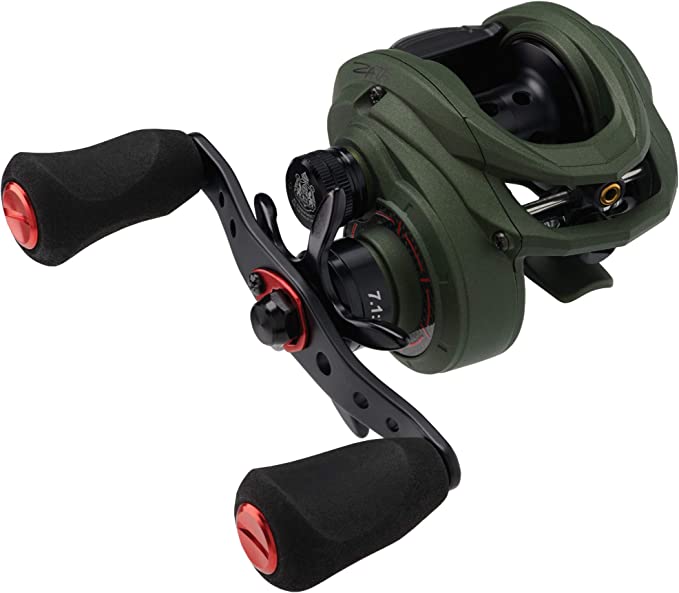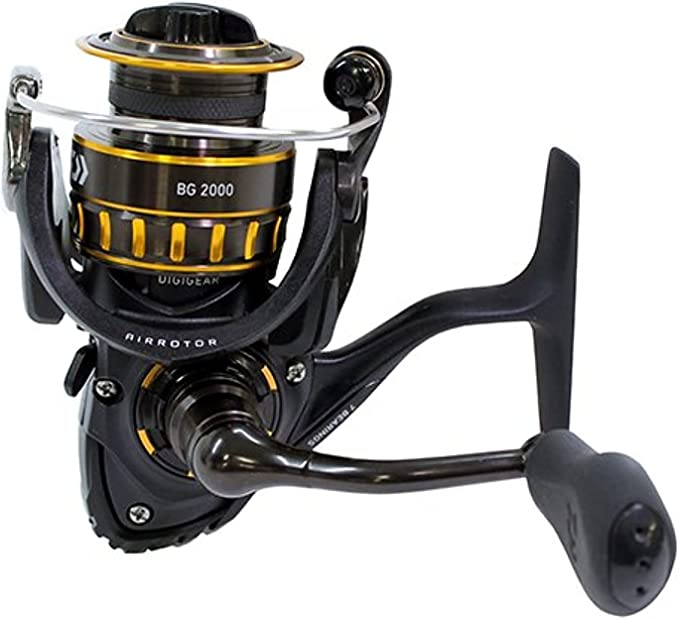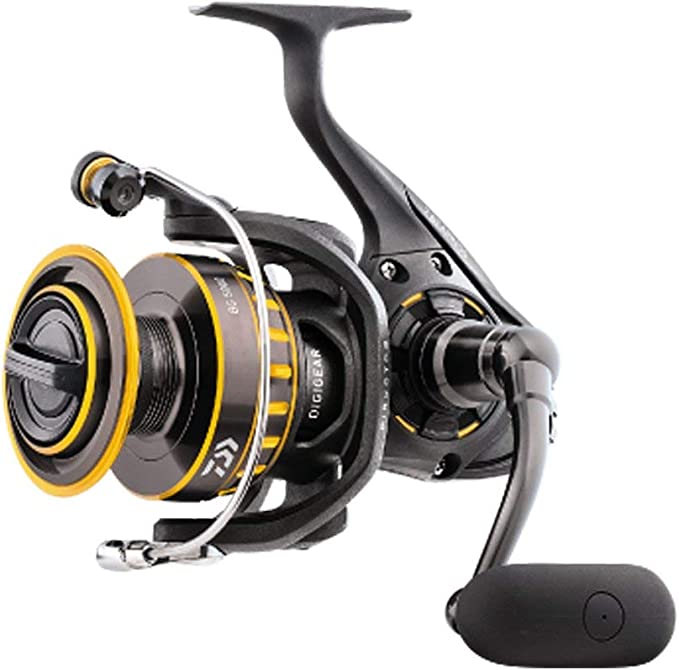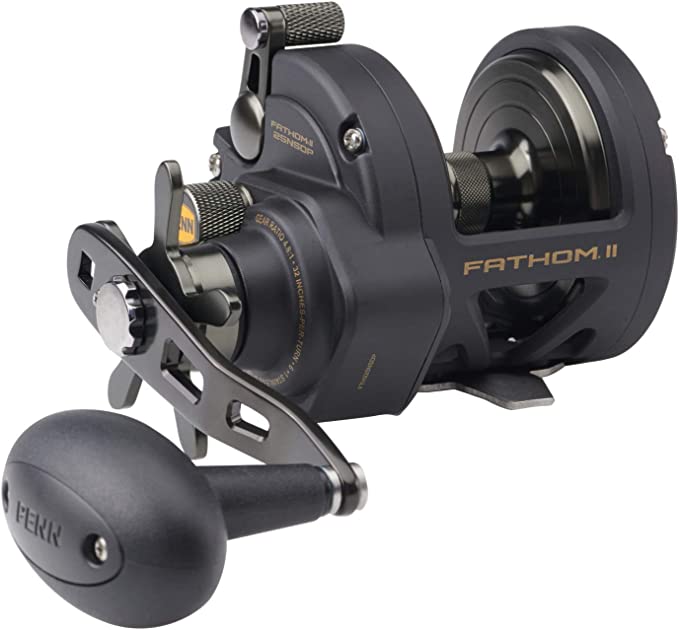The Unseen Battle: How the Lew's Tournament MP Reel Masters the Physics of a Perfect Cast
Update on Aug. 1, 2025, 12:11 p.m.
There is a moment in every cast, a sliver of time suspended between hope and physics. It’s the instant your lure is released, soaring towards a distant target. When all goes well, it’s poetry in motion. But when physics rebels, that poetry becomes a chaotic snarl of line—the dreaded bird’s nest. This frustrating event isn’t a flaw in your technique, but a raw display of inertia, where the spool’s rotational speed outpaces the line flying through the air. The Lew’s Tournament MP Speed Spool LFS isn’t just a tool to manage this; it’s a sophisticated weapon system engineered to win this battle before it begins. To truly appreciate it, we must venture inside and witness the unseen wars being waged on your behalf.
The Outburst and The Whisper: Conquering the Cast
The fight against backlash is a two-front war, and the Tournament MP’s Multi-Setting Brake (MSB) system deploys two distinct physical principles as its army. It’s a masterful dance between a powerful outburst of control and a constant, guiding whisper.
The first line of defense is the centrifugal brake, the system’s shock troops. Housed internally are four brake shoes that you can engage or disengage. At the explosive start of a cast, as the spool rockets to its maximum angular velocity, the fundamental law of centrifugal force takes command. The engaged brake shoes are flung outward with a force proportional to the square of that speed, pressing against an internal ring. This creates powerful, immediate friction precisely when the spool is most eager to overrun. It’s a short, sharp, and decisive action that tames the initial, violent outburst of inertia, preventing the catastrophe before it can unfold.
But as the lure travels and slows, this initial braking force subsides. This is where the second unit, the magnetic brake, takes over. Controlled by an external click-dial, this system works on a more subtle principle: Faraday’s law of induction. As the aluminum spool—a conductor—spins within the brake’s magnetic field, it generates tiny electrical whirlpools known as eddy currents. These currents create their own opposing magnetic field, producing a smooth, non-contact resistance that gently slows the spool. Think of it as a quiet, persistent whisper of control that you can fine-tune in seconds to account for a sudden headwind or a lighter lure. It’s this constant, adaptable pressure that allows for maximum casting distance while maintaining control to the very end.
Together, the initial, powerful outburst of the centrifugal brake and the continuous, adjustable whisper of the magnetic brake form a seamless system of command over the entire casting arc, transforming a potential physics problem into a predictable and precise tool.
The Unyielding Heart: Forging a Seamless Retrieve
Once the cast is made, a new battle begins—the one against torque and wear. Every turn of the handle, especially when a powerful bass is on the line, puts immense stress on the reel’s internal drivetrain. The quality of this experience, what we call “smoothness,” is a direct result of mechanical integrity under pressure. This is where the Tournament MP’s core engineering shines.
The foundation is its one-piece aluminum frame. Much like the chassis of a high-performance car, this rigid, unyielding structure prevents any twisting or flexing under load. This rigidity is paramount because it serves as the guarantor for the alignment of every component within. Without it, even the most precise gears would be compromised.
At the center of this fortress lies the P2 Super Pinion®. In many reels, the small pinion gear that drives the spool can slightly deflect under heavy torque. This minute misalignment causes imperfect contact with the main gear, resulting in a gritty feel, inefficient power transfer, and accelerated wear. The P2 Super Pinion design brilliantly solves this by adding a crucial bearing to support the pinion gear. This support ensures it remains perfectly aligned with the main gear, no matter how hard the fight. The result is a transfer of power that is incredibly efficient and a retrieve that feels “buttery smooth,” not because of excessive grease, but because of profound engineering precision. The addition of graphite sideplates maintains this structural integrity while reducing overall weight, creating a tool that is both robust and comfortable for a long day of casting.
The Art of Surrender: Mastering the Drag
The final confrontation happens when a large fish makes a powerful, surging run. Here, victory lies not in unyielding force, but in the art of a controlled surrender. This is the job of the carbon fiber drag system. While its 20-pound maximum drag rating is impressive, the true story is in the material itself. A fish’s run generates friction and heat within the drag washers. Inferior materials can glaze over or become “sticky” under these conditions, leading to a jerky release of line and, often, a snapped leader.
Carbon fiber is the material of choice for high-performance applications precisely because its coefficient of friction remains remarkably stable even as temperatures rise. This means the drag on the Tournament MP doesn’t grab or slip; it yields line with a consistent, smooth pressure. It’s a system designed to calmly absorb the violent headshakes and powerful runs of a trophy fish, protecting your line while systematically wearing the fish down. It’s the final piece of the engineering puzzle, ensuring that the connection forged by a perfect cast can be brought to a successful conclusion.
Ultimately, the Lew’s Tournament MP Speed Spool LFS demonstrates a profound principle: the greatest tools are those that internalize complex science, making it feel like pure instinct in the user’s hand. By understanding the unseen battles of physics and engineering being won with every cast and retrieve, you’re no longer just fishing. You’re wielding a masterpiece of applied science, and every catch becomes a deeper appreciation for the intelligence in your hand.
























